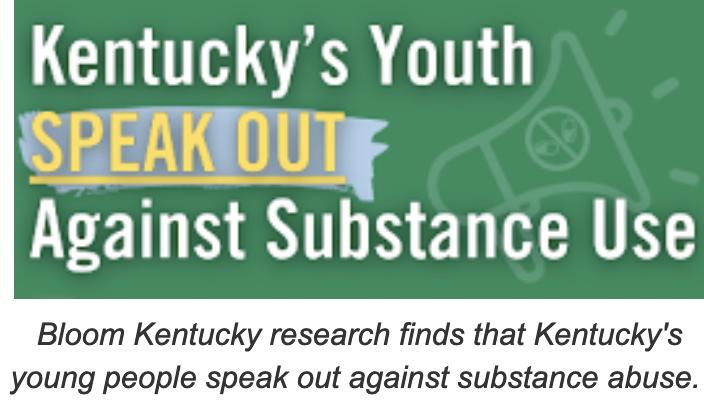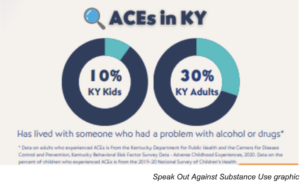Survey of 52 high-school students in Ky. hears calls for support of parents, not just students, when tackling substance-use problem

Kentucky Health News
Kentucky high-school students in a recent study about substance abuse and its prevention offered some pointed advice about why their peers turn to substances, and said it’s important to consider the whole family, not just youth, when looking for solutions.
Students reported that while they know some peers who use opiates, they most commonly reported opioid use is among the adults in the peers’ lives, says the report.
“[We need] support for students whose parents use,” said a high school student from Taylor County. “Target both youth and parents because they are influencing use in their children or other students.”
Bloom Kentucky did the survey among 52 youth from across the state, with 11 of them completing a survey and 41 of them participating in focus groups. The research was conducted in May and June with support from the Foundation for a Healthy Kentucky.
Bloom Kentucky is an initiative supported by grantmakers from across Kentucky that are invested in making policy changes to prevent and lessen the impacts of childhood trauma, also called adverse childhood experiences, or ACEs. One in five Kentucky children has experienced at least two ACEs.
 The survey found that 73% of the students said they feel either concerned or very concerned about the level of substance use in their school. The most commonly discussed issue among the student participants was vapes and electronic cigarette usage among their peers.
The survey found that 73% of the students said they feel either concerned or very concerned about the level of substance use in their school. The most commonly discussed issue among the student participants was vapes and electronic cigarette usage among their peers.
The survey found that 10% of youth and 30% of adults in Kentucky reported having lived with someone who had a problem with alcohol or drugs.
“Vapes is the big thing,” said an Oldham County student. “Everyone knows someone that has been around a vape or does it themselves.”
Asked why youth turn to substances, the students listed stress, anxiety, peer pressure and depression as the top four reasons.
“With trauma, they have two options: they either go seek help or they turn to substances to numb themselves out, ” said a Graves County student.
The students suggested four key solutions to help mitigate and prevent substance use among youth, which have both policy and programmatic implications, according to the report. They include:
Investing in youth and community activities: “We need more safe activities to do on the weekends and during the summer,” said a student from Hancock County.
The report highlights a program in Franklin County that does just this. The “Just Say Yes” program is a pilot program that provides funding directly to families to pay for after-school and other out-of-school time activities, a time when substance use and other harmful behaviors are highest. Woodford County is also actively working toward implementing this program.
Supporting youth through positive adult relationships: “Kids aren’t going to open up unless they know the person and trust them. Mental health counselors don’t know us on a personal level because they have so many students. It’s a great idea but you have to have the resources and amount of people for that to be able to get to know kids well enough and to open up,” said an Oldham County student.